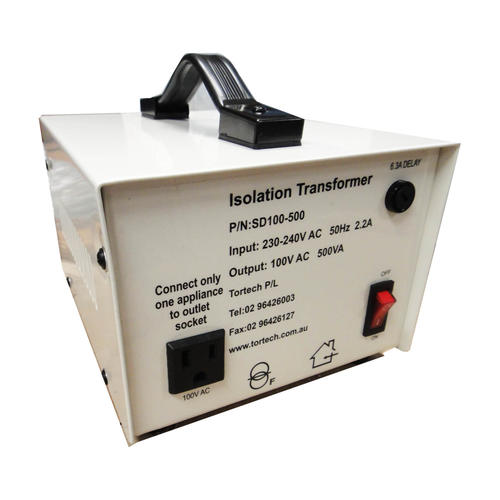You can, as long as you understand some basic technical details and take a few precautions.
Basics
You can use equipment requiring almost any voltage, anywhere you like, as long as the specific voltage and current requirements of that equipment are met. For that, you’ll need to know:
- The operating voltage of your equipment
- Its power consumption, and
- If it needs to be / can be reconfigured for different line voltages
If you own 100V Japanese equipment that cannot be reconfigured for a particular local voltage, and many pieces cannot, you’ll need to select and source a suitable step-down or step-up transformer with the correct power rating and voltage. Such a step-down transformer should be sourced from a quality local manufacturer like Tortech.
A quality step-down transformer should be capable of delivering between 1.5x and 3x (or more) the rated maximum power consumption of the equipment drawing power from it. It must also deliver the voltage your equipment requires. A little less is OK, but no more.
Low-power devices are best to use with a step-down transformer because this avoids the need for a massive one. High-power step-downs are expensive, large, heavy, ugly things, and just another box you have to find a place for.

Note that 100V-rated equipment needs a 100V step-down transformer rather than the 110V or 120V offerings commonly available. Make sure you know which one you need, as indicated on the placard on the rear of your equipment.
Avoid cheap Chinese transformers as they are often incorrectly rated for voltage and significantly underrated in terms of the power they can deliver (VA), and their duty cycle. Remember, you get what you pay for.
Special Cases
If you have an amplifier, you’ll need a big step-down transformer, and these can be expensive. An amplifier rated for 500W maximum power consumption should be matched with a transformer rated for a minimum of 1 – 1.5kW at a 100% duty cycle, or more if possible. That’s a hefty transformer, and it won’t be cheap.
The high rating is necessary to minimise power supply source impedance and transformer core saturation. This will maximise amplifier performance and ensure the transformer does not overheat during normal use. Because hefty transformers are heavy and expensive, amplifiers are the least well-suited for use with step-down transformers; the bigger and more power-hungry, the less well-suited.
For low-powered equipment like turntables, DACs and preamps, smaller step-down transformers can work well. A moderately sized transformer will safely be able to run several low-power devices. Just make sure that the total continuous power consumption of all the connected equipment is comfortably exceeded (1.5x to 3x, or more) by the continuous maximum rating of the stepdown transformer.
Voltage
You may not realise that it is always best to run high-power, high-current devices like amplifiers on the highest voltage they can be configured for, ie 240V in most cases. There are two reasons for this.
Setting the highest voltage provides the greatest margin for overvoltage conditions, so there is some degree of protection in this configuration. Also, at 240V, the current requirements are less than half of what they are at 100V. Lower current draw means less voltage sag at the outlet, lower wire losses due to resistive heating and reduced dynamic effects associated with modulation of the power supply rails.
Many ‘extreme’ hi-fi systems in countries with 100 or 120V mains will have house wiring configured to deliver 220 or 240V for this reason.
Warnings
You must never plug equipment rated to run on 100V or 120V into an Australian 240V mains outlet unless it has been configured to run at 240V. Failure to adhere to this warning will almost certainly result in the death of your equipment. Worst of all, this death may be permanent. You’ve been warned!
Reconfiguring equipment may require internal adjustment, soldering, and replacement parts such as circuit breakers and/or fuses of a different current rating to suit the higher line voltage. This work must not be ignored, as it often is, because equipment may fail if a fault occurs once equipment has been converted to run on 240V if the correct current limits are not in place.
I’ve seen a recent influx of 100V equipment that has failed because people have a basic step-down setup and have temporarily forgotten that their equipment needs to be plugged into it! For this reason, it is imperative to have equipment reconfigured where it can be and to make sure any 100V zone is marked where equipment cannot be moved or plugged in elsewhere, with appropriate mains plugs.
PS
If you found this information helpful, there is a donate button in the footer and 140 other FAQs you might enjoy, plus hundreds of other full-length articles, all for free. Find another specialist doing even 1/4 of that and I’ll buy YOU a drink!
Discover more from LiQUiD AUDiO
Subscribe to get the latest posts sent to your email.
